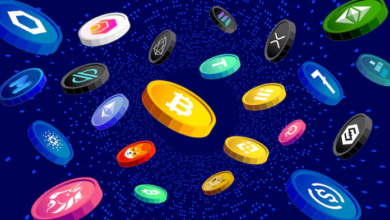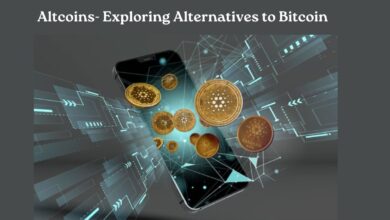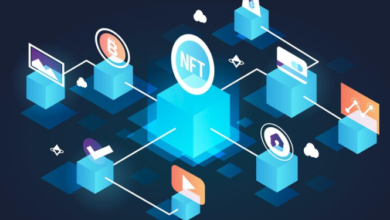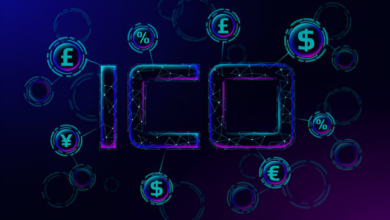NFTs (Non-Fungible Tokens): What They Are and How to Get Started
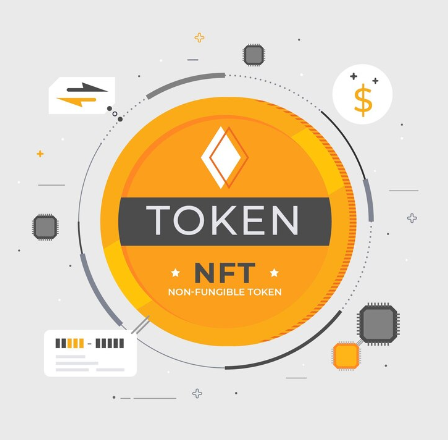
Non-fungible tokens (NFTs) have surged into the spotlight, captivating artists, collectors, and investors. They redefine ownership and authenticity in the digital era, offering creators new ways to monetize their work and enthusiasts’ unique digital items. This article explores NFTs’ significance and how to explore this intriguing world.
Understanding NFTs
Unlike Bitcoin or Ethereum, which can be traded interchangeably, NFTs stand out as individual digital possessions that uniquely symbolize specific items like artworks, videos, music, or virtual properties.
NFTs rely on blockchain technology, the decentralized ledger used in cryptocurrencies. They are created, bought, and sold on platforms like Ethereum, Binance Smart Chain, or Flow, with ownership records stored immutably on the blockchain.
Why NFTs Matter
The rise of NFTs has significant implications for creators and collectors:
1. Ownership and Authenticity:
NFTs enable creators to prove ownership and authenticity of their digital creations, transforming the art world by allowing direct monetization of digital works and providing buyers with proof of originality.
2. New Revenue Streams:
NFTs offer artists, musicians, and creators alternative revenue streams beyond traditional avenues like galleries or streaming platforms. NFT sales often include royalties, allowing creators to earn ongoing income from resales of their works.
3. Collectibles and Virtual Assets:
NFTs usher in a new era of digital collectibles and virtual assets, from trading cards to virtual fashion items, reshaping how we perceive and engage with digital goods.
Getting Started with NFTs
Interested in exploring NFTs? Here’s how to start:
1. Learn About NFTs and Blockchain:
Get up to speed on NFTs and blockchain technology. Use online articles, videos, and tutorials to understand blockchain creation, trading, and storage.
2. Pick a Blockchain and Wallet:
Choose a blockchain like Ethereum, Binance Smart Chain, or Flow. Set up a compatible digital wallet for secure NFT storage.
3. Explore NFT Marketplaces:
Check out platforms like OpenSea, Rarible, or Foundation to browse, buy, and sell NFTs. Each has unique features and communities, so find one that suits you.
4. Start Collecting or Creating:
Once familiar, begin collecting from artists you admire or mint your NFTs. Consider rarity, quality, and creator reputation.
5. Engage with the Community:
Join NFT communities on social media, forums, and Discord. Connect with enthusiasts and creators for insights and opportunities.
6. Stay Informed and Cautious:
Keep up-to-date and be cautious. NFT markets can be volatile, so research thoroughly, seek advice, and invest wisely.
The Future of NFTs
NFTs are poised to continue evolving and expanding into new territories. From virtual experiences to digital identities, NFTs are unlocking once unimaginable possibilities. With the advancement and broader acceptance of blockchain technology, the incorporation of NFTs into our everyday routines is expected to increase, serving as a link between tangible and virtual experiences.
NFTs and Sustainability
One key aspect often discussed about NFTs is their environmental impact. Most NFTs, especially those minted on the Ethereum blockchain, require significant computational power, leading to high energy consumption. This has sparked debates about the sustainability of NFTs and the broader blockchain industry. Some artists and platforms are exploring alternative blockchains with lower energy footprints, such as Flow or Tezos, to mitigate environmental concerns.
Legal and Copyright Implications
Navigating legal and copyright issues is crucial when dealing with NFTs. Since ownership and provenance are recorded on the blockchain, it’s essential to understand the rights associated with the digital assets being bought or sold. Creators should consider copyright implications and licensing agreements before minting or purchasing NFTs to ensure they have the legal authority to sell or use the underlying content.
Rarity and Metadata
The rarity of NFTs is a crucial factor in determining their value. Many NFTs are part of limited editions or have unique attributes contributing to their desirability. Creators can enhance the value of their NFTs by incorporating scarcity and exclusivity into their offerings. Additionally, metadata associated with NFTs, such as artist information, creation details, and provenance, adds to their authenticity and value.
Emerging Trends in NFTs
The NFT landscape constantly evolves, with new trends and innovations emerging regularly. Some notable trends include:
1. Metaverse and Virtual Real Estate:
The rise of virtual worlds like Decentraland and Sandbox has sparked a boom in virtual real estate NFTs, where users can own and develop digital properties.
2. Gaming and NFT Integration:
NFTs are revolutionizing the gaming industry by enabling actual ownership of in-game assets, fostering player-driven economies, and creating interoperability across different games.
3. Music and NFTs:
Musicians are exploring NFTs to release exclusive tracks, offer unique experiences to fans, and create new revenue streams outside traditional music distribution models.
Risks and Considerations for Participants
While NFTs offer exciting opportunities, participants should be aware of potential risks, including:
1. Market Volatility:
Prices of NFTs can exhibit significant volatility, with the market subject to abrupt changes influenced by speculation and emerging trends.
2. Security Risks:
As with any digital asset, security risks are associated with storing and trading NFTs. Users should take precautions to safeguard their wallets and access credentials.
3. Regulatory Uncertainty:
The regulatory landscape for NFTs is still evolving, and legal frameworks may vary by jurisdiction. It’s important for holders and investors to stay abreast of regulatory updates and understand compliance obligations.
Conclusion
Non-fungible tokens (NFTs) blend art, tech, and finance, opening new doors for creators, collectors, and investors. Understanding NFT principles, exploring diverse use cases, and staying informed enables confident navigation of this dynamic ecosystem. Embracing innovation and addressing challenges will be vital to realizing NFTs’ transformative potential across digital art, gaming, music, and virtual experiences.
For more NFT-related topics, explore www.intogeeks.com.
